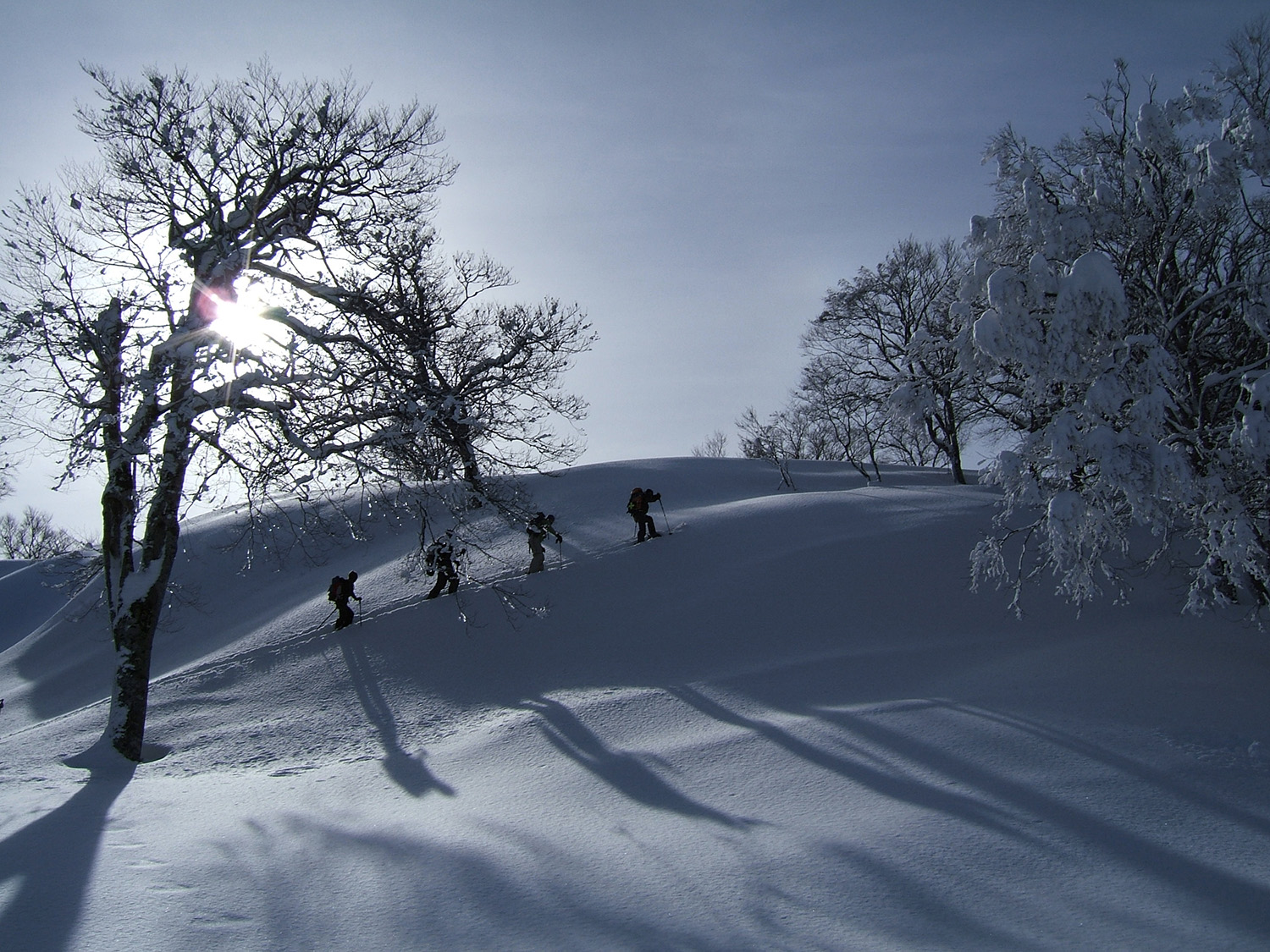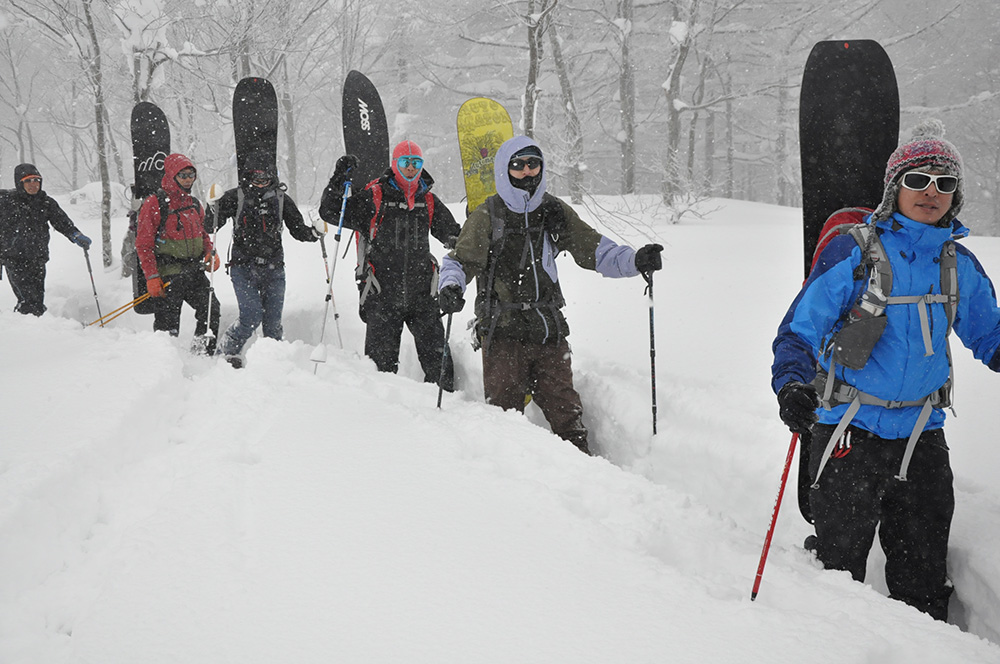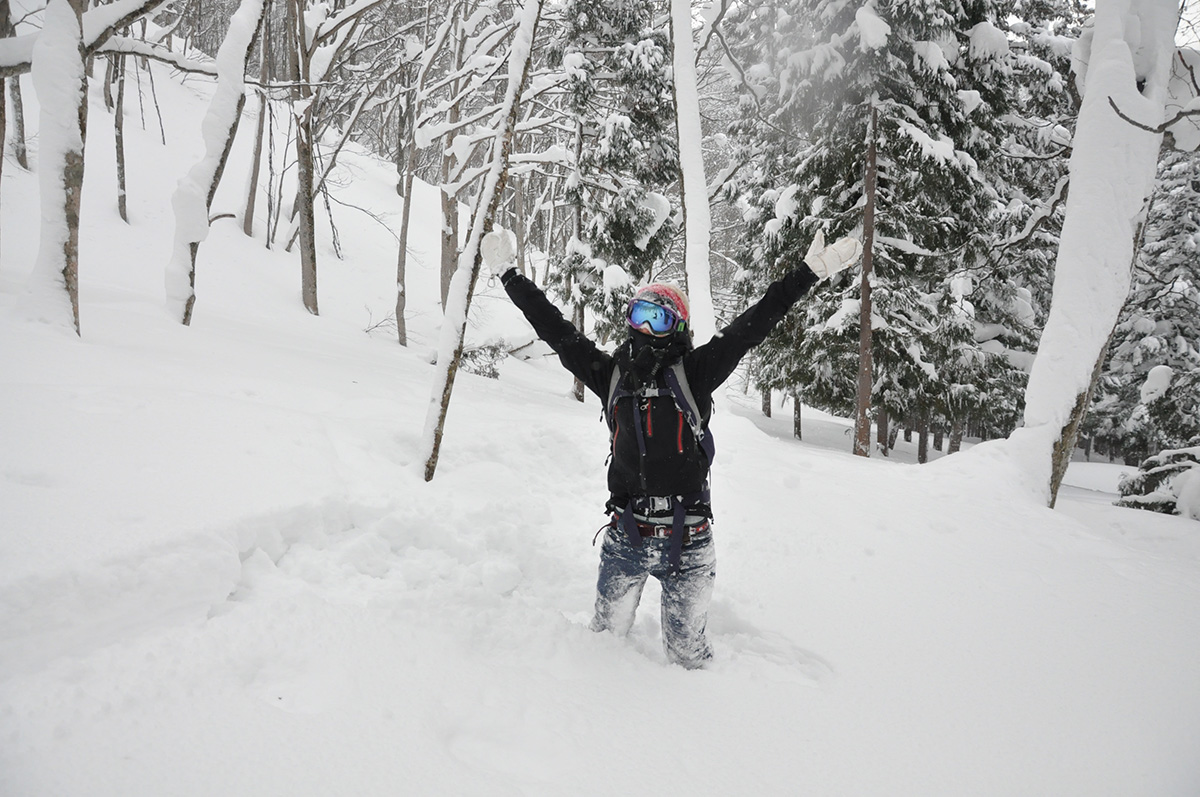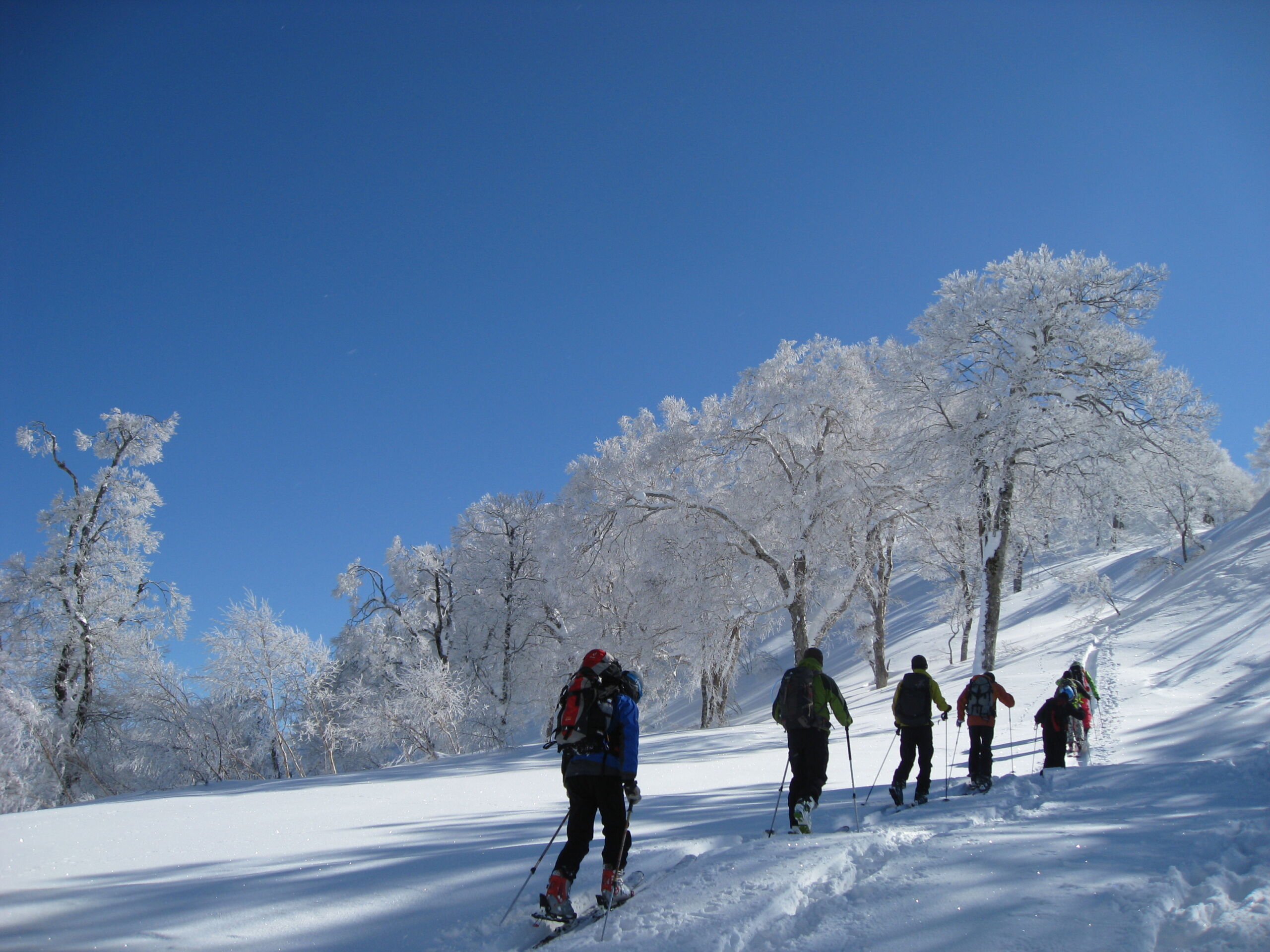Nozawa Onsen Backcountry Users Guide


The area beyond the controlled ski resort boundary is an hazardous mountain terrain
You enter the backcountry at your own risk. You are responsible for your own safety, any accidents and potential rescue, including all associated costs.
In order to minimise risk and to help you return safely from your backcountry adventure we have outlined some important safety rules.
If you are not familiar with the area or skilled enough we HIGHLY recommend you to hire a professional guide and try going on a backcountry tour first.

Terrain and skills
- Research the terrain and the route you are planning to take.
- Evaluate your party’s skill level properly :
Is the leader of your party experienced enough ? - Is the route appropriate to your party’s level?
- Do you have the stamina, skills and knowledge to ski/ snowboard in the area you plan to enter ?
- Do all members of your party understand the route including any hazards ?
Weather
- Check the weather, snow conditions, and avalanche advisory on the day you are planning to go BC
- Have you checked the current weather and the latest forecast for the route ?
- Do you understand the changing snow conditions and avalanche risks along your route?
Equipment
Carry appropriate equipment with you including : Backup warm clothes, avalanche beacon, shovel, probes, fully charged cell phone (ideally with spare battery), food, first aid kit, head light and lighter.
Submit a “Climbing Plan Report”
- Have you made a climbing plan ?
- Have you shared the climbing plan with all the members of your party and their families ?
- Have you submitted the climbing plan to a local police office or ski patrol in order to mitigate the potential risk in the backcountry area ?
- You can find the official notification sheet for backcountry ski touring in all ski resort offices.
- A “Climbing Plan Report” is neither a permit nor an application for a permit. It is simply a notification of your plans, and acknowledges that the risks of your planned trip are your own responsibility.
- The report can play an important role for search and rescue in the event you have an emergency situation.
Keep the above rules in mind, and remember to communicate with your family and friends regularly.
Enjoy the mountains !
A Backcountry Warning
We believe that as skiing was originally developed in the natural environment, backcountry skiing and snowboarding itself should not be banned.
However, skiers/snowboarders should know the risks of the natural environment, have sufficient knowledge and be well experienced. For those without appropriate skill, knowledge and equipment, backcountry skiing/snowboarding should be restricted.
Some of the risks you must consider
- Avalanche
- Uncontrolled descents : i.e. Slipping, falling or sliding down or tumbling from a cliff, steep slope, or corniche.
- Falling into cracks or crevasses.
- Missing the route due to sudden weather changes.
- Missing the route due to the navigation errors.
- Changing the planned route due to unexpected terrain/obstacles.
Risk Management
Before entering winter mountain terrain, proper knowledge and judgment is required :
- What kind of snow conditions, weather and temperature cause avalanches ?
- How frequent do avalanches occur along the planned route ?
- How suitable is the planned route according to the terrain on the mountain ?
- Do you have suitable equipment and sufficient supplies ?
- It’s important to avoid being alone in the backcountry.
- And it’s vital that a tour is ended if weather changes suddenly for the worse, or the health of any member of the tour deteriorates.
To Survive
To survive through an emergency situation in the backcountry area, the party should be equipped at least with the standard safety items listed above and must carry necessary food to survive for a few days in case the weather prevents a timely rescue.
Never underestimate the value and importance of a climbing report ! A climbing report will insure prompt rescue, and make the rescue effort smoother, more efficient and safer for the rescuers. The probability of survival after an accident will be significantly improved.
When you submit a report, you can also obtain local updated information from professionals.
Other things to consider
Certain areas may be classified as off-limits for various reasons including :
- Skiing/snowboarding in the area may cause avalanches, and a danger to others.
- Skiing/snowboarding straight across ski trails may cause collisions with other mountain users.
- The area may be deemed unsafe due to obstacles such as towers or fences.
- The terrain may be deemed too dangerous for the party’s skill level.
You must also be aware of potential for your party to cause danger to others when returning from an uncontrolled backcountry area back to a regular skiing area.
Keep in mind descent safety etiquette. For example, the party should not descend at the same time, nor should you cross lines on steep gradients. If an avalanche is triggered and all members of a party are engulfed, rescue will become impossible.
You should, as much as possible, stick to your planned route to ensure rescuers search the correct areas, in the event of an accident.
If a ski area has special local rules relating to its terrain and environment, the party should adhere to these rules.
There is no way to avoid 100% of the risk associated with backcountry touring but following this guide will help you mitigate any risks you face.
Enjoy the backcountry at your own risk. Act diligently, judge wisely, and stay safe !

